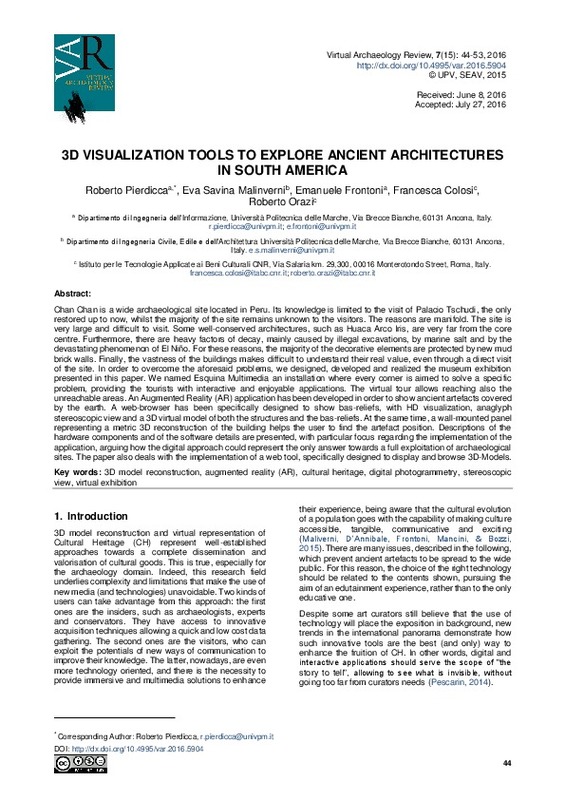JavaScript is disabled for your browser. Some features of this site may not work without it.
Buscar en RiuNet
Listar
Mi cuenta
Estadísticas
Ayuda RiuNet
Admin. UPV
3D visualization tools to explore ancient architectures in South America
Mostrar el registro completo del ítem
Pierdicca, R.; Malinverni, ES.; Frontoni, E.; Colosi, F.; Orazi, R. (2016). 3D visualization tools to explore ancient architectures in South America. Virtual Archaeology Review. 7(15):44-53. https://doi.org/10.4995/var.2016.5904
Por favor, use este identificador para citar o enlazar este ítem: http://hdl.handle.net/10251/80657
Ficheros en el ítem
Metadatos del ítem
| Título: | 3D visualization tools to explore ancient architectures in South America | |
| Autor: | Pierdicca, Roberto Malinverni, Eva Savina Frontoni, Emanuele Colosi, Francesca Orazi, Roberto | |
| Fecha difusión: |
|
|
| Resumen: |
[EN] Chan Chan is a wide archaeological site located in Peru. Its knowledge is limited to the visit of Palacio Tschudi, the only restored up to now, whilst the majority of the site remains unknown to the visitors. The ...[+]
|
|
| Palabras clave: |
|
|
| Derechos de uso: | Reconocimiento - No comercial - Sin obra derivada (by-nc-nd) | |
| Fuente: |
|
|
| DOI: |
|
|
| Editorial: |
|
|
| Versión del editor: | https://doi.org/10.4995/var.2016.5904 | |
| Tipo: |
|








